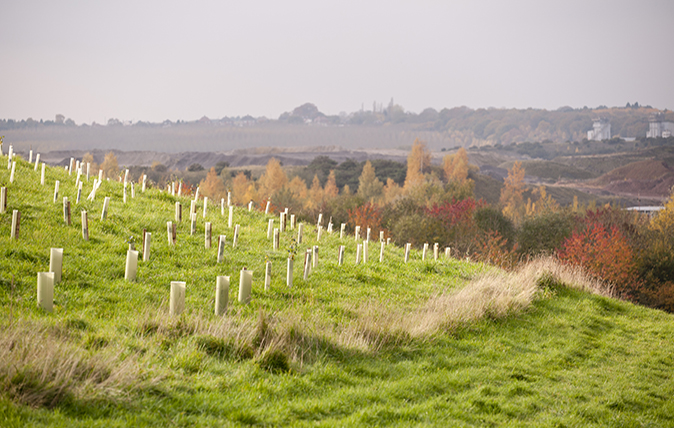England's newest forest
A voluntary project to regenerate landscapes in the Midlands is going from strength to strength - and planting millions of trees in the process


The area of the Midlands being regenerated by the The National Forest Company is going from strength to strength
Many woodlands in England have been enjoying the seasonal carpets of bluebells and primroses which herald the springtime, but none enlivened so remarkable an area as the National Forest (01283 551211; www.nationalforest.org), where the country’s biggest environmentally led regeneration project is taking place.
The not-for-profit organisation, founded 25 years ago with the express purpose of returning a derelict, coal-pillaged Midlands landscape to its former glory, has planted more than 8.5 million trees (above)—The Duke of Cambridge planted the eight millionth in 2012—and created or restored 2,200 hectares (5,435 acres) of wildlife habitats, which include 60 miles of new hedgerow and 150 new ponds. Sir William Worsley, a former CLA president, has been appointed chairman of the National Forest Company in its anniversary year. ‘This is a landscape that was badly damaged by heavy industry, particularly opencast mining, and we’re reinvigorating —and beautifying—it for both the surrounding local communities and for tourists,’ he explains.
Encompassing the ancient forests of Charnwood to the east and Needwood to the west and including parts of Derbyshire, Leicestershire and Staffordshire, the 200sq mile area has, since 1991, increased its forest cover from 6% to 20%; the aim is to regenerate a third of the landscape with woodland. The new trees are primarily native hardwood species—oak, birch and ash (until ash dieback disease arrived), plus rowan, small-leaved lime, wild cherry, hazel, field maple and some coniferous species.
The work has been undertaken in partnership with landowners and volunteers as well as local authorities, businesses and communities and has support from Government (with a Defra grant) and the general public. The forest has created thousands of jobs and significantly contributed to the area’s tourism industry—its worth is now estimated at £373 million per year.
Sir William, whose Hovingham Hall estate in North Yorkshire has won awards for forestry and conservation, began his tenure on April 1. ‘It’s very important that the Government continues to support us—ensuring that that happens will be part of my job, so my history with the Forestry Commission and the CLA should be useful,’ he comments. ‘Another of my challenges will be to increase funding from outside government.’ The popularity of schemes for the public such as Plant a Tree or dedicating a woodland grove show how the project has already struck a chord.
‘Not having been back to the villages around Coalville for 20 or 30 years, I returned to walk the National Forest Way. I stood on Bagworth Hill and was totally amazed to see before me such a green and wooded landscape and to realise that I was actually standing on a former slag heap,’ says John Swanwick, who dedicated a woodland grove to his late father last year.
Exquisite houses, the beauty of Nature, and how to get the most from your life, straight to your inbox.
Sir William will also focus on increasing the management of woodlands and expanding markets for timber as the trees mature. Although much of the area is privately owned, ‘that’s what has so incentivised the project. It really is a landscape for the people, with more than 60 miles of new cycleways and activities such as fishing, mountain biking, carriage driving and riding, plus nine woodfuel installations doing their bit for renewable energy.’
He adds: ‘I’ve become rather fond of a Greek proverb: “A society grows great when old men plant trees whose shade they shall never sit in”. The company has been planting trees not for itself, but for the next generation— and the one after. We need to get more people round to that way of thinking.’
Annunciata is director of contemporary art gallery TIN MAN ART and an award-winning journalist specialising in art, culture and property. Previously, she was Country Life’s News & Property Editor. Before that, she worked at The Sunday Times Travel Magazine, researched for a historical biographer and co-founded a literary, art and music festival in Oxfordshire. Lancashire-born, she lives in Hampshire with a husband, two daughters and a mischievous pug.
